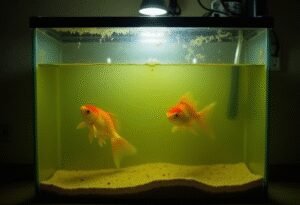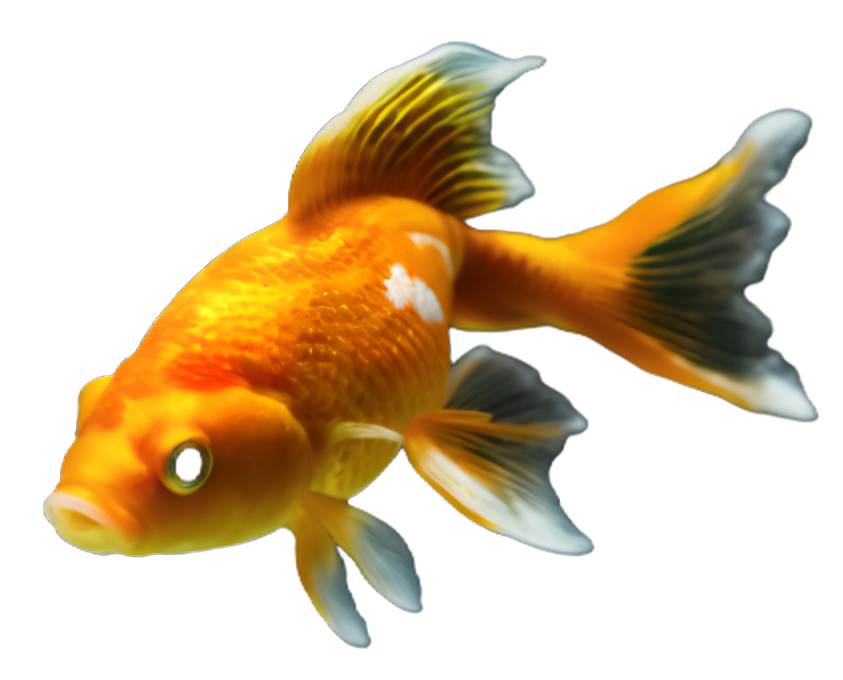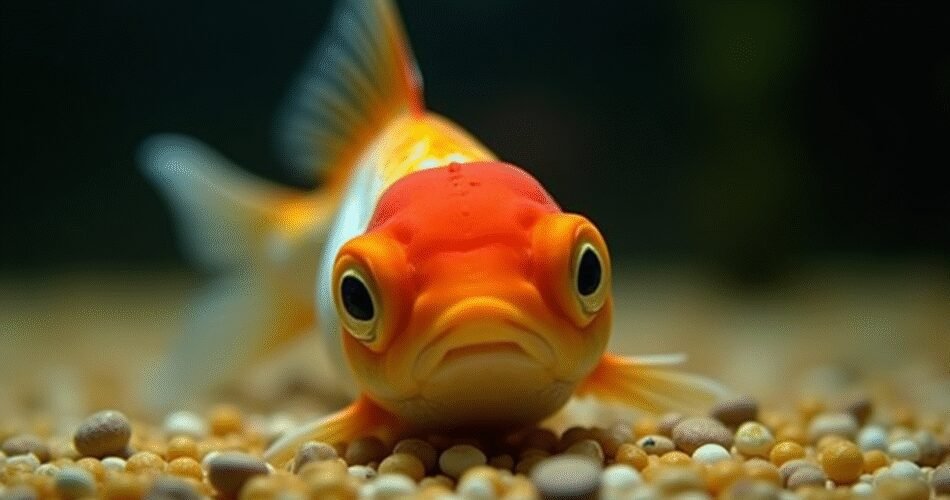Introduction to Water Quality in Goldfish Tanks 🐠
Let me be straight with you—I learned the hard way that water quality is everything when it comes to keeping goldfish. When I first started, I thought a tank, some water, and a few fish were all it took. Boy, was I wrong! I quickly realized that their health, color, and energy depend entirely on clean, balanced water. It’s not just about filling a tank; it’s about creating a stable, thriving environment. Good water keeps my goldfish vibrant, active, and free from stress and disease.
But how do I know if something’s off? I look for clear signs like cloudy water, funky odors, or my goldfish gasping at the surface. These are major red flags that tell me it’s time to act. That’s why I’m obsessed with goldfish tank maintenance basics. Staying on top of water changes, testing regularly, and using a solid filter are non-negotiables for me.
In this guide, I’ll walk you through recognizing the signs of poor water quality in goldfish tanks so you can keep your finned friends happy and healthy, just like I do.
Understanding Water Parameters Crucial for Goldfish 🔬
When it comes to goldfish health, I always start with water quality—it’s non-negotiable. The key parameters—pH, ammonia, nitrite, nitrate, and temperature—can make or break their well-being.
First up, pH levels. I aim for a range between 7.0 and 7.4. If it’s too acidic or alkaline, my goldfish get stressed, and their immune systems take a hit.
Ammonia is a silent killer. I keep it at zero, no exceptions. Even tiny amounts can burn their gills and lead to serious health issues.
Nitrite should also be undetectable. It messes with their oxygen uptake, and high levels can be fatal.
Nitrate is less toxic, but I still keep it under 20 ppm. Elevated nitrate causes long-term stress and can stunt their growth.
Temperature matters more than people think. I maintain a steady 68–74°F (20–23°C). Sudden swings shock their systems and spell trouble.
These optimal water conditions for goldfish aren’t just ideal—they’re essential. Ignoring them invites disaster, and the signs of poor water quality in goldfish tanks become obvious once you know what to look for.
Physical Signs of Poor Water Quality in Goldfish 👀
I’ve gotten pretty good at spotting the visible signs of water issues in goldfish tanks early on. When my goldfish show physical changes like clamped fins, I know something’s up. Clamped fins mean their fins are held tight against their body instead of flowing freely—it’s a sure sign of stress from poor water quality.

Lethargy is another red flag. If my goldfish are just sitting at the bottom or seem too tired to swim, it’s often due to ammonia or nitrite spikes. I also watch for abnormal swimming patterns, like darting or struggling to stay balanced. These goldfish appearance changes due to water quality tell me it’s time to test the water and do a partial change ASAP.
Ignoring these signs can lead to bigger health problems, so I always act fast to keep my tank safe and clean.
Behavioral Signs Your Goldfish is Suffering from Poor Water Quality 😟
I’ve learned to watch my goldfish closely because their behavior tells me everything about their environment. When I notice goldfish behavior changes from bad water, it’s a clear signal that something’s wrong. These aren’t just quirks—they’re distress calls.
Gasping at the Surface: If I see my goldfish gasping at the top of the tank, I know oxygen levels are low or toxins are high. This is one of the most urgent indicators of toxic water in fish tanks. It means my filtration might be failing or the water hasn’t been changed recently enough.
Erratic Swimming or Clamped Fins: When my goldfish starts darting around unpredictably or swimming in jerky motions, it’s a red flag. Clamped fins—where they hold their fins tight against their body—signal stress or discomfort, often due to ammonia or nitrite spikes.
Hiding or Lethargy: If my usually social goldfish is suddenly hiding or lying at the bottom of the tank, I take it seriously. This avoidance behavior means they’re not feeling well, and it’s often linked to poor water conditions that need immediate attention.
Water Appearance and Odor as Diagnostic Tools 👃
I pay close attention to the water appearance and odor in my goldfish tank because these are clear signs of water quality issues. If I notice cloudy water in my goldfish tank, it’s a red flag that something’s off—maybe a bacterial bloom or excess waste. A sudden greenish tint tells me algae might be thriving due to too much light or nutrients.
When it comes to smell, I never ignore smelly fish tank water signs. A foul or musty odor usually means there’s decaying organic matter or poor filtration. These tank conditions don’t just look and smell bad—they stress my goldfish and can lead to health problems. By regularly checking the water’s clarity, color, and odor, I can catch issues early and keep my tank healthy.
The Role of Ammonia and Nitrite Levels in Goldfish Health ⚠️
I can’t stress enough how dangerous high ammonia and nitrite levels are for my goldfish. When ammonia builds up in the tank, it burns their gills and skin, making it hard for them to breathe. I’ve seen my fish gasping at the surface or acting lethargic—clear signs something’s wrong.
Nitrite is just as nasty. It stops their blood from carrying oxygen, leading to nitrite poisoning. If I notice my goldfish becoming listless or their gills turning brown, I test the water right away. These are classic effects of ammonia on goldfish, and ignoring them can be fatal.
Keeping an eye on water quality is non-negotiable for me. Regular testing and water changes are my go-to strategies to prevent these issues and keep my fish thriving.
Impact of High Nitrate Concentrations 🧪
I’ve learned the hard way that high nitrate levels can turn goldfish tanks into toxic water environments. When nitrates climb, my goldfish show clear signs of distress—lethargy, loss of appetite, and faded colors. These high nitrate effects on goldfish aren’t just uncomfortable; they weaken their immune systems, making them prone to diseases like fin rot or bacterial infections.
To tackle this, I focus on nitrate reduction in aquariums through regular water changes, live plants, and proper filtration. It’s made a huge difference in keeping the water safe and my fish vibrant. If you notice signs of poor water quality in your goldfish tanks, don’t wait—act fast. Your fish’s health depends on it.
Signs of pH Imbalance in Goldfish Tanks ⚖️
I’ve learned firsthand how critical pH levels are for my goldfish. If the water’s too acidic or alkaline, it stresses them out almost immediately. I watch for signs like sluggishness, gasping at the surface, or faded colors—these are clear indicators something’s off.
Maintaining optimal pH for goldfish tanks is non-negotiable. Goldfish thrive in slightly alkaline water, around 7.2–7.6. Straying from this range weakens their immune systems, making them prone to infections and fin rot.
I test my water regularly because unstable pH is a red flag for broader water quality issues. It often means there’s a buildup of waste or insufficient filtration. Ignoring these signs of pH imbalance in fish tanks risks their health and shortens their lifespan. Keeping pH stable isn’t just about numbers—it’s about giving my goldfish a safe, clean home.
Common Causes of Poor Water Quality in Goldfish Tanks 🤔
I’ve learned the hard way that water quality issues are often caused by simple, avoidable mistakes. If you’re struggling with murky or smelly water in your tank, you’re not alone. Let me walk you through the most frequent causes I’ve encountered in goldfish tanks.
One of the biggest sources of poor water quality in aquariums is overfeeding. I used to dump in way too much food, and the uneaten leftovers would decay, spiking ammonia and clouding the water. Now, I feed only what my goldfish can finish in two minutes.
Overcrowding is another common culprit. Too many fish produce more waste than your filter and beneficial bacteria can handle. I always make sure my tank isn’t overstocked to avoid overloading the ecosystem.
Insufficient filtration is a major one. I once used a filter that was too weak for my tank size, and it just couldn’t keep up. Investing in a powerful, appropriate filter made a huge difference for me.
These tank maintenance mistakes for goldfish are easy to make, but even easier to fix once you know what to look for.
Conclusion and Steps to Improve Water Quality in Goldfish Tanks 🛠️
If you’ve ever wondered how to fix poor water quality in fish tanks, you’re not alone. I’ve been there—cloudy water, algae overgrowth, and stressed goldfish are clear signs something’s off. Improving water quality is the heart of good goldfish care, so here’s what I do to keep things clean and healthy.
First, I test the water weekly. High ammonia or nitrites mean trouble. Regular partial water changes—about 20-30% each week—make a huge difference. I also use a reliable filter and clean it monthly (without replacing media) to maintain biological balance. Overfeeding is a common mistake; I feed small amounts and remove uneaten food quickly. Live plants can help, too, by absorbing excess nutrients. These goldfish tank water care tips have kept my fish vibrant and my tank clear. Start with testing, stay consistent, and your goldfish will thrive.

